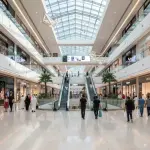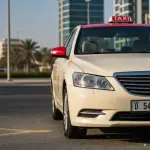With sleek metro lines expanding and electric air taxis on the horizon, Dubai’s public transport system is moving rapidly into the future. Yet, even as high-tech innovations shape tomorrow’s mobility, the city’s humble bus remains an essential player.
While Dubai Metro’s new Blue Line construction gathers pace and flying taxis capture imaginations, global trends suggest that buses are far from obsolete. In fact, international experience indicates that buses often complement urban rail, offering critical coverage and flexibility that trains cannot match.
“Buses often provide easier access, especially for those with limited mobility or in lower-density areas,” says Peter White, professor emeritus at the University of Westminster. “Metro stations are farther apart, and some trips are simply better served by bus.”
Rather than disappearing, buses in cities with new metro or tram systems often adapt, becoming feeders to rail stations or running parallel to reduce walking distances. This strategy has helped boost ridership in cities like Kitchener-Waterloo, Canada, where a tram system launched in 2019. Despite fewer buses on the road, passenger numbers increased due to more frequent services and better connections.
“What people want is to arrive at a stop knowing a bus will come within 10 minutes,” says Dr Alexander Wray, a transport researcher at Western University. “That reliability builds confidence in the system.”
Dubai is following a similar path. The Roads and Transport Authority (RTA) reported an 8% rise in bus journeys last year, reaching 188 million. The city is investing in modern depots, station upgrades, and low-emission vehicles, including 40 all-electric buses. The goal: seamless integration with the Metro and other transit modes.
High-quality bus fleets, such as those in Nottingham and Edinburgh in the UK, show how buses can thrive even alongside trams. In 2023, Edinburgh logged 110 million bus trips, ten times more than on its tram line. These cities demonstrate that buses remain vital, particularly when run efficiently and with passenger comfort in mind.
Peter Jones, a professor at University College London and former member of the Dubai Future Council for Transportation, notes the trend towards making buses more attractive. “Modern buses have Wi-Fi, power outlets, and better ride quality—helping them compete with car travel,” he says.
Another innovation gaining ground, especially in North America, is demand-responsive transit. These flexible bus services, akin to shared ride-hailing, use algorithms to match passenger demand in real-time, offering door-to-door convenience, particularly in suburban or rural areas.
As Dubai continues to diversify its transport offerings, buses are evolving alongside. They remain key to accessibility, connectivity, and affordability—values that no amount of futuristic technology can fully replace.
In the age of metros and air taxis, the bus is not fading—it’s adapting, and thriving.










